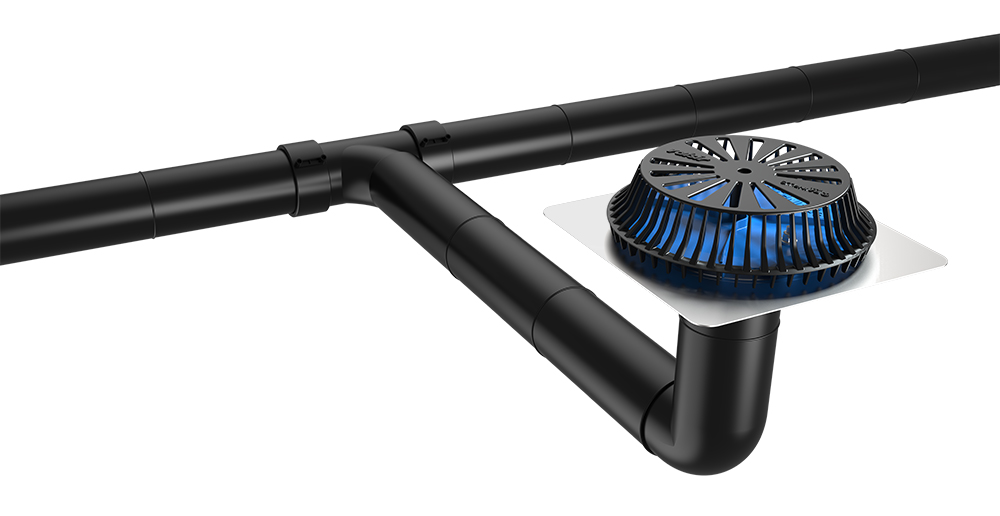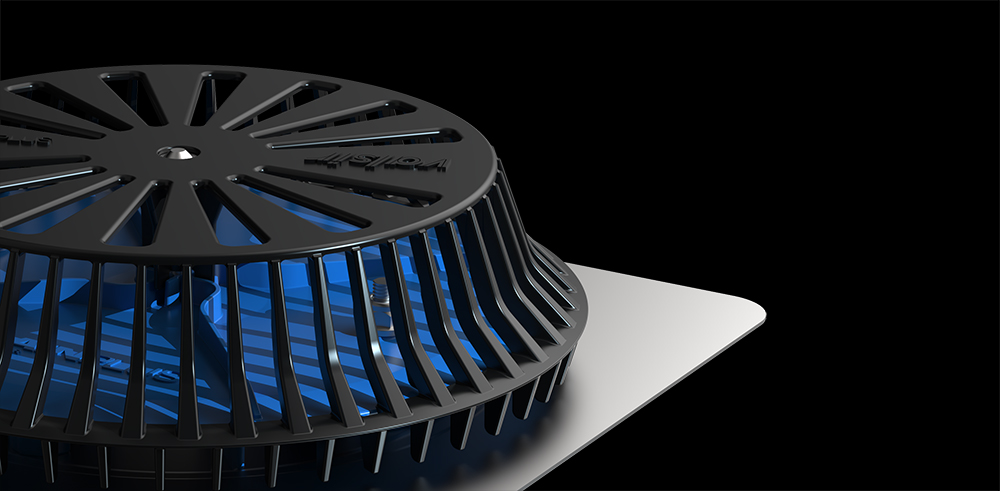The growing scarcity of water resources and the increase in extreme weather events make it increasingly important to adopt rainwater harvesting systems. Once neglected, rainwater is now a valuable resource which, if well managed, can help reduce drinking water consumption and associated costs. In a climate characterised by long periods of drought alternating with intense rainfall, having an efficient rainwater harvesting system is a strategic and responsible choice.
What is a rainwater harvesting system?
A rainwater harvesting system is designed to collect, convey, filter and store water that falls on the impermeable surfaces of a building, such as roofs or terraces. The aim is to reuse this water for non-potable purposes, contributing to water savings and the sustainability of the building.

Components of a rainwater harvesting system
At the heart of every system are the collectors, i.e. collectors or grids positioned at strategic points on the roof. Their task is to intercept rainwater and direct it to the collection network. In more advanced solutions, such as Rainplus, the collectors are designed to prevent air from entering the system, increasing efficiency and reducing the need for pipe slopes.
The role of siphonic systems in rainwater recovery
A siphonic system represents a technological evolution compared to traditional gravity-fed systems. Here, water is conveyed through completely full pipes, without the presence of air, allowing the flow to accelerate thanks to a physical principle known as the siphon effect. This allows horizontal pipes without a slope to be installed, simplifying integration with the building structure and significantly reducing the overall size of the system.

Designing a rainwater harvesting system
The design of a system starts with an analysis of the surface area available for collection, taking into account the average annual rainfall and the intended use. Based on these factors, the collectors, pipes and storage elements are sized. It is also essential to provide an adequate filtering system to prevent the accumulation of debris and not compromise the quality of the collected water.
Rainplus is the starting point for the construction of a rainwater harvesting system: thanks to performance that is up to ten times higher than that of a gravity-fed rainwater system, it allows large quantities of water to be collected quickly, avoiding waste.
Where to use collected rainwater
Rainwater can be reused for many applications: irrigating gardens, flushing cisterns, industrial washing, filling fire-fighting tanks. Italian legislation allows the reuse of rainwater for non-potable uses, provided that certain health and hygiene requirements are met and direct connections to the mains water supply are avoided.
Maintenance of a rainwater harvesting system
A well-designed system requires simple but regular maintenance. It is important to periodically check the condition of the collectors and filters, removing leaves or debris that could obstruct the flow. Scheduled maintenance prevents performance drops and ensures the long life of the system.
Environmental benefits of rainwater harvesting systems
Reducing drinking water consumption is one of the main environmental advantages of these systems. In addition, by helping to reduce the volume of water flowing into sewer networks during heavy rainfall, collection systems also help prevent flooding and overloading of urban infrastructure. This makes them a beneficial solution for both individual buildings and the urban environment as a whole.

Rainplus system: the advanced solution for rainwater harvesting
Rainplus is an innovative system developed to optimise rainwater drainage and collection. Based on siphon technology, it allows high flow rates to be managed with few elements and small diameter pipes. Among the most obvious advantages are maximum hydraulic efficiency, savings on materials and quick installation. Its flexibility makes it suitable for new buildings and renovations.
How to install a rainwater harvesting system in existing buildings
Contrary to what one might think, a rainwater harvesting system can also be installed in existing buildings. The use of horizontal pipes and compact collectors such as those from Rainplus allows for non-invasive installation, maintaining the architecture of the building unchanged. In some cases, it is also possible to connect directly to existing collectors and significantly improve the functionality of the system.

Factors affecting the cost of a rainwater harvesting system
Installation costs vary depending on the size of the system and the materials used. However, the water savings and the long service life of the system make the investment well worth it. An initial cost-benefit analysis helps to determine the best balance between performance and budget.
Rainwater harvesting systems as a sustainable and strategic choice
Integrating a rainwater harvesting system into all buildings where possible is a smart choice for addressing today's environmental and climate challenges. Solutions such as Rainplus demonstrate that it is possible to combine high efficiency, sustainability and ease of installation. A concrete step towards more resilient and conscious construction.
 Italiano
Italiano
 English
English
 Deutsch
Deutsch
 Français
Français
 Español
Español
 Greek
Greek